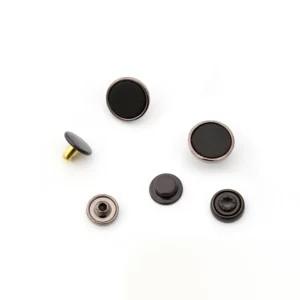Several materials are commonly used in the production of metal buttons for clothing. These materials vary based on the desired appearance, durability, and cost.
Some of the most common materials include:
- Brass: Brass is a popular choice due to its durability, corrosion resistance, and ability to be easily molded into various shapes. It can also be finished in different ways to achieve a range of appearances, from polished to antique.
- Stainless Steel: Stainless steel buttons offer excellent corrosion resistance and strength, making them suitable for heavy-duty or outdoor clothing applications. They can be polished or coated for different finishes.
- Aluminum: Aluminum buttons are lightweight and often used for casual or fashion-oriented clothing items. They can be anodized or coated for color options and increased durability.
- Zinc Alloy: Zinc alloys, such as zamak, are popular for their affordability and ability to mimic the appearance of other metals like brass or pewter. metal buttons for clothing They can be plated with various finishes to achieve desired aesthetics.
- Nickel: Nickel buttons are known for their shiny appearance and resistance to tarnishing. They are often used in formal or dress clothing but may cause allergic reactions in some individuals.
- Copper: Copper buttons offer a distinctive reddish-brown hue and are prized for their aesthetic appeal. They can be left untreated for a natural patina or coated to maintain their shine.
- Tin: Tin buttons are lightweight and often used for decorative purposes or on lightweight clothing items. They can be painted, coated, or left untreated for a rustic appearance.
- Pewter: Pewter buttons are made primarily from tin mixed with small amounts of copper, antimony, or other metals. They have a low melting point, making them easy to cast into intricate designs.
These materials can be used alone or in combination with each other to create unique button designs with varying aesthetics and functional properties. The choice of material depends on factors such as the desired appearance, cost considerations, and the intended use of the buttons in clothing production.
